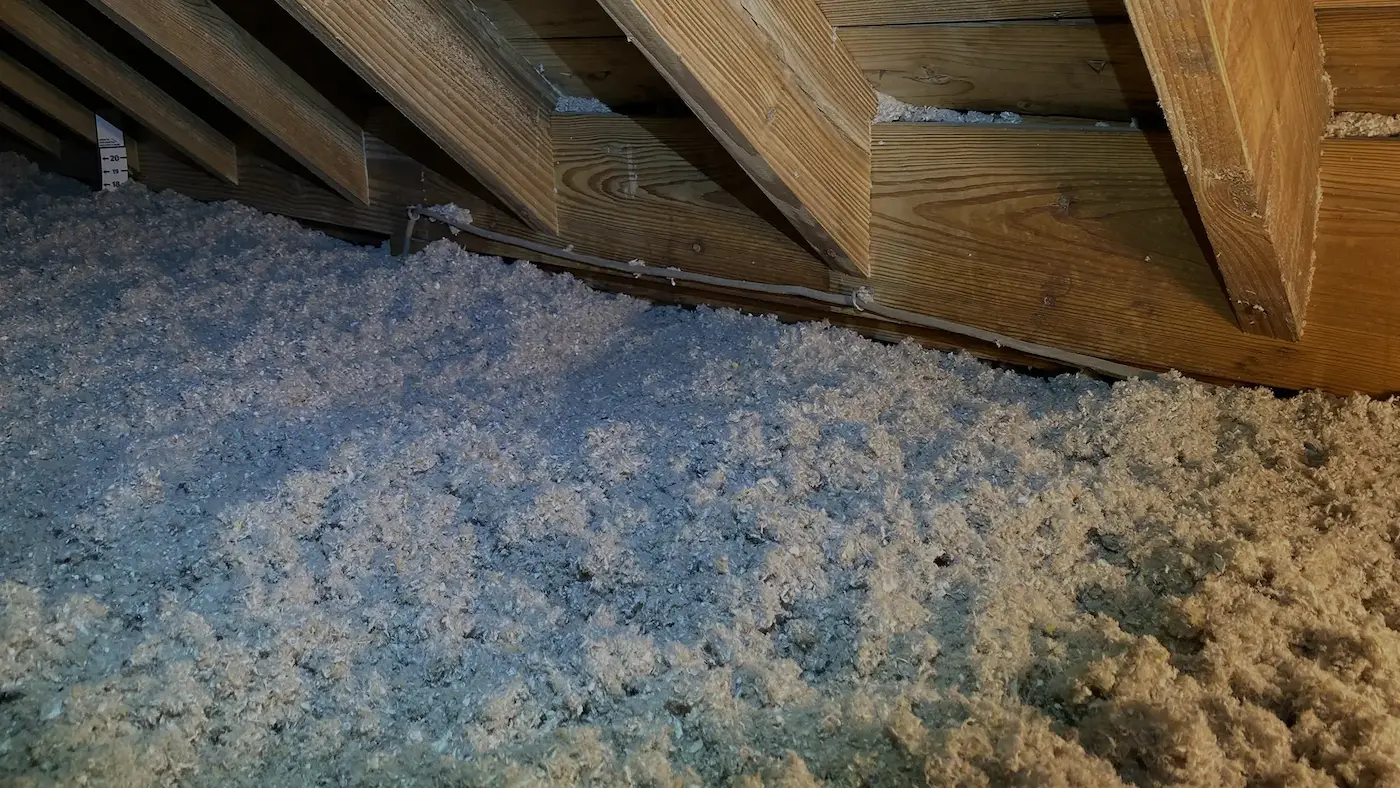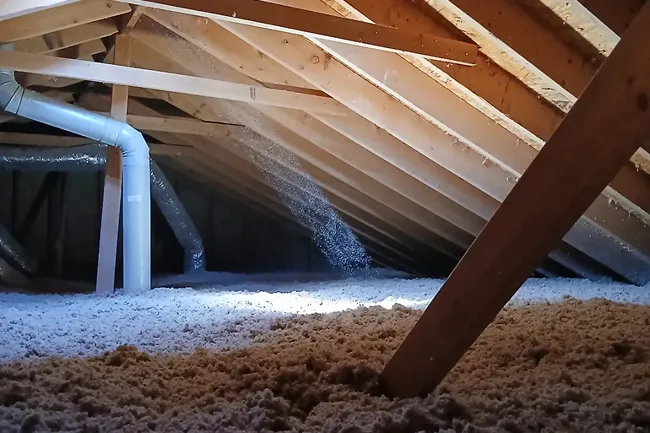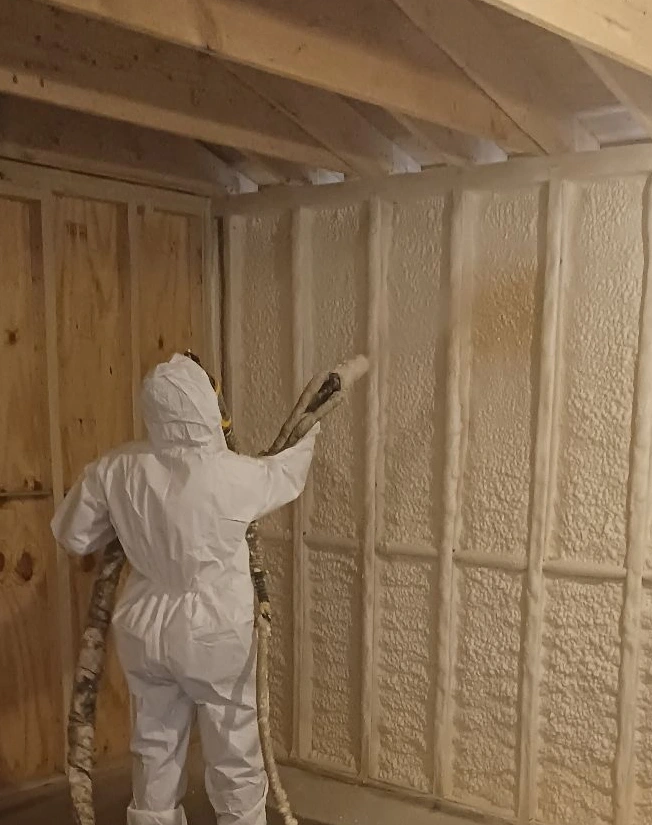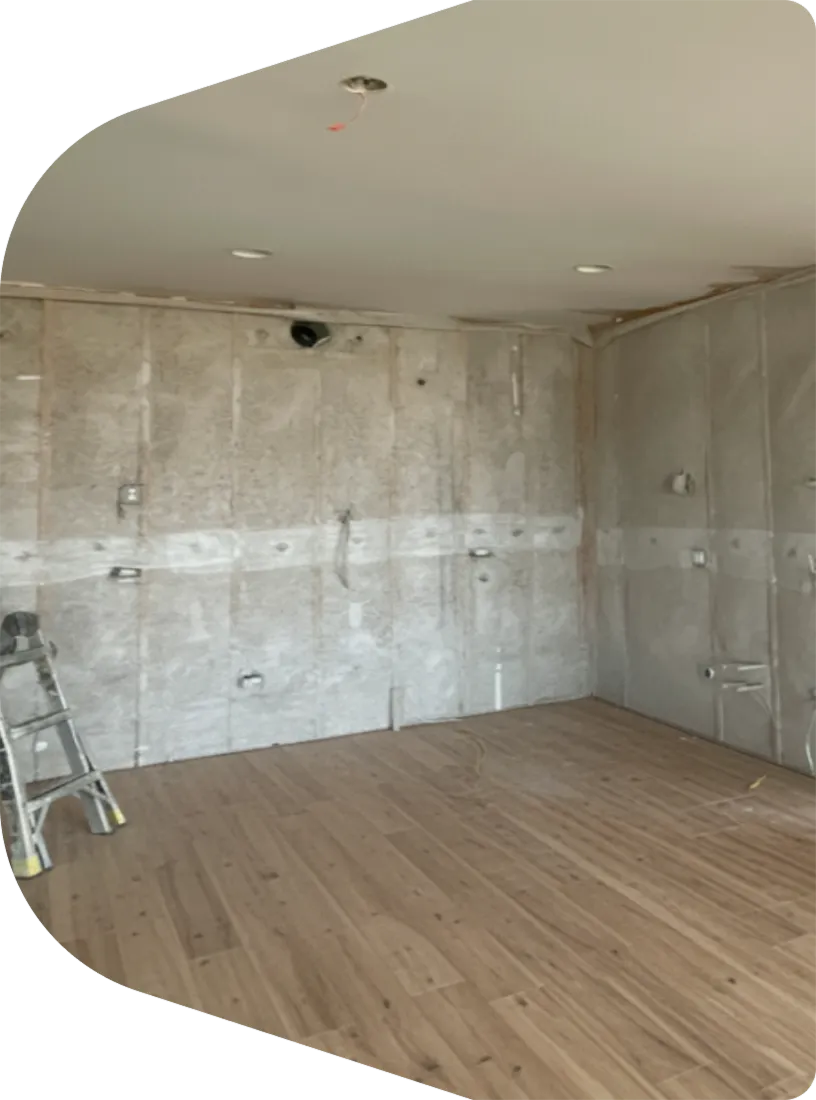
Attic Insulation Cost Per Square Foot
Fiberglass
Cellulose






Request a Quote Today

How much does it cost to insulate a 1,000 sq ft attic with R-49 insulation?
R49 is the minimum code for attics in zone 5 which includes parts of the Midwest and Chicago.
R38-R49 loose fill fiberglass for example, does not perform well in extreme heat (summer days in Chicago averaging 85-90 degrees) or extreme cold (-10 30 degrees), while spray foam, mineral wool, or loose fill cellulose are all options for the attic floor. This includes air seal, baffles, and hatch cover.
Cellulose $3200
Fiberglass $2700
Spray Foam $8608


Cellulose loose-fill insulation has a major advantage over batt or spray foam powerful truck-mounted blowing machines blown directly into the stud cavity with the drywall already in place.
Advantages: A cost-effective alternative to spray foam when retrofitting buildings or residential homes. Cellulose is a plant-based recycled material.
Disadvantages: Thermal bridging
Advantages: Cost, green materials, non-itch.
Cellulose Attic Insulation Costs Per Sq Foot Calculator
• Cathedral ceiling insulation - $3.50-5.00 Per Sq Ft
• Flat roof insulation - $3.50-5.00 Per Sq Ft
• Basement insulation - $1.50-4.00 Per Sq Ft
• The exterior wall insulation - $1.50-4.50 Per Sq Ft
• Garage ceiling insulation - $3.50 – 5.00 Per Sq Ft
• Transition wall insulation-$2.50-4.00 Per Sq Ft
• Furnace room insulation - $1.50-4.00 Per Sq Ft
• Crawl space insulation - $2.50-4.50 Per Sq Ft
• Kitchen & bathroom wall insulation - $1.50-4.50 Per Sq Ft

Home Insulation Cost Per Sq Ft
✓ Cellulose On Attic Floor 2.50 Per Sq Ft
✓ Cellulose Blown In Walls / Ceiling $2-4 Per Sq Ft
✓ Mineral Wool $4-5 Per Sq Ft
✓ Fiberglass 1.90-2.40 Per Sq Ft
Insulation materials are produced in a variety of ways using several different material combinations.
Since R-Value is measured in enclosed spaces, any air infiltration into the insulated cavity significantly reduces the intended R-Value.
Why start with the attic?
Comparing insulation cost for 2×6 sidewalls, attic insulation, cathedral ceilings, and basement insulation, we find cellulose is preferred with the exception of basement wall insulation.
We install the correct/optimal insulation levels for your attic R60, ceiling R38-60, sidewall R21, basement R13, and crawl space R13-38. Your budget is $3 per sq ft for insulation which includes additional considerations.
Fire stop and air seal cost an extra .35 cents. Cellulose provides R21 insulation, fills voids and gaps left by fiberglass, performs better in summer, and has better fire resistance, mold mildew and moisture resistance, and is pest resistant.
✓ Insulation labor and material
✓ Fire stop
✓ Air seal
✓ R-value to code
✓ Proper ventilation
✓ Cozy comfortable interior
✓ Pass occupancy inspections

✓ Cathedral Ceiling
✓ Attic Duct Work
✓ Knee Wall
✓ Vented Attic
✓ Sidewall
✓ New Construction Sound Dampening
Attic Insulation Cost Advantages / Disadvantages
Flash and Batt Method is a new hybrid combination of closed cell spray foam and fiberglass batts to reduce costs of labor and materials for spray foam insulation.

Spray Foam Insulation Cost
Cost per inch of R-value for an existing cathedral ceiling: four considerations are fiberglass batt, loose fill fiberglass, loose fill cellulose, and closed-cell spray foam. Cost per inch includes labor, material, and installation.
What is the cost of spray foam?
Spray foam in a cathedral ceiling vs. 6″ of cellulose: $4.50 R-35 with spray foam (benefit — more tight). But only if you seal the gaps properly with Tyvek seam tape.
With cellulose, it gives about R-21, $2. If you open the ceiling to spray, consider the cost of drywall removal and drywall replacement after spraying.

Fiberglass Is Rarely Used Except In Basement Walls.
Cellulose insulation is used for garage ceilings, exterior and interior walls and ceilings for sound and thermal protection, and attic floors for optimal heat resistance.
Fiberglass is rarely used except in basement walls with the paper side facing out towards the living space as a vapor barrier.
Wall insulation 2×6 cellulose stops air 35 % better than fiberglass. It's fire retardant and doesn’t require drywall removal for insulation. Gaps and cracks in older homes lower R-value per inch more than spray foam.
Cellulose is cost-efficient but has a lower R-value on a 2×4. For the wintertime, fiberglass is great because the drywall holds the heat in the room. In the summertime, the fiberglass is letting the heat pass through and making the drywall hot.




















.svg)
.svg)
.svg)
.svg)
.svg)
.svg)
.svg)
.svg)
.svg)
.svg)
.svg)
.svg)
.svg)
.svg)

.svg)
.svg)
.svg)
.svg)
-1.svg)
.svg)
.svg)















